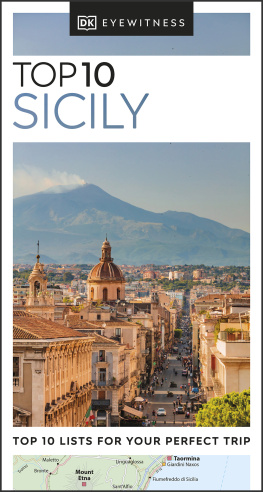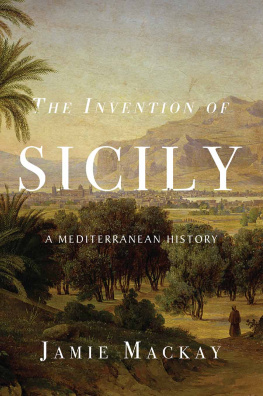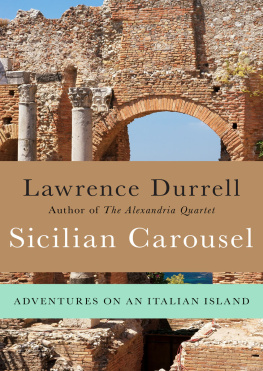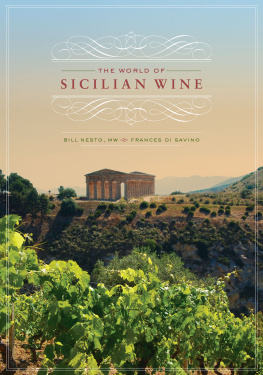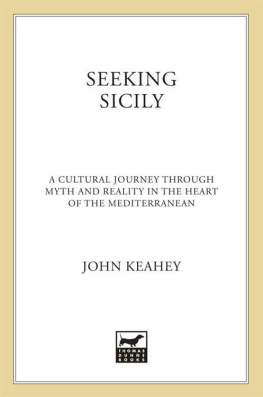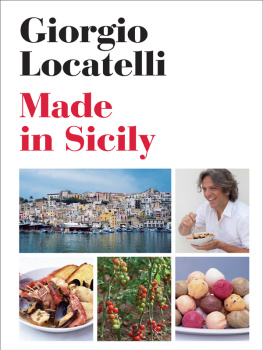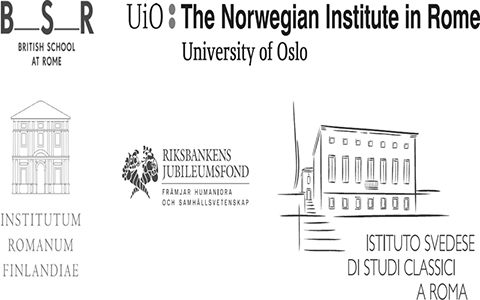Pagebreaks of the print version
TRINACRIA, AN ISLAND OUTSIDE TIME
TRINACRIA, AN ISLAND OUTSIDE TIME
INTERNATIONAL ARCHAEOLOGY IN SICILY
Edited by
CHRISTOPHER PRESCOTT, ARJA KARIVIERI, PETER CAMPBELL, KRISTIAN GRANSSON AND SEBASTIANO TUSA
Published in the United Kingdom in 2021 by
OXBOW BOOKS
The Old Music Hall, 106108 Cowley Road, Oxford, OX4 1JE
and in the United States by
OXBOW BOOKS
1950 Lawrence Road, Havertown, PA 19083
Oxbow Books and the individual authors 2021
Hardcover Edition: ISBN 978-1-78925-591-1
Digital Edition: ISBN 978-1-78925-592-8 (epub)
Kindle Edition: ISBN 978-1-78925-593-5 (Kindle)
A CIP record for this book is available from the British Library
Library of Congress Control Number: 2021932144
All rights reserved. No part of this book may be reproduced or transmitted in any form or by any means, electronic or mechanical including photocopying, recording or by any information storage and retrieval system, without permission from the publisher in writing.
For a complete list of Oxbow titles, please contact:
UNITED KINGDOM
Oxbow Books
Telephone (01865) 241249
Email:
www.oxbowbooks.com
UNITED STATES OF AMERICA
Oxbow Books
Telephone (610) 853-9131, Fax (610) 853-9146
Email:
www.casemateacademic.com/oxbow
Oxbow Books is part of the Casemate Group
Front cover : Photo: Claudio Provenzani
Preface
Trinacria, Sebastiano and Sicily
Valeria Li Vigni Tusa
Prehistory and paleethnology are the foundations of Sebastiano Tusas research. He cherished exploring and developing these subjects through his knowledge of places and the people that inhabited them. His goal was to reconstruct diachronic history based on the study of archaeological finds and their contexts, which supply evidence of human actions. Sebastiano maintained the fundamental significance, for in-depth study and knowledge of the region, of experiencing a place by spending long periods exploring the location thoroughly and knowing the traditional practices and customs of those who inhabited it. He held the conviction that it was essential to listen very carefully to the deeply held insights of those who lived in the region, in the belief that the keen insights provided by those, having been born and living in the region, who could weigh the balances and knew the stories so often passed on through the spoken word.
It was just these insights that were his incentives to undertake unceasing research in a region that for him was sometimes virtually unexplored. I found myself on numerous occasions sharing these fascinating ethno-archaeological dialogues, delighting in the irony of Sebastiano that spared no one, enrolling an exponentially expanding number of enthusiasts in archaeological research. His passion for archaeology, the spirit of adventure, and his vibrant and youthful curiosity were the foundation for the innumerable investigations, surveys and excavations documented in articles, publications and participation in conferences in Italy and abroad.
His passionate work was fundamental for the realisation, more than thirty years ago, of the book La Sicilia nella Preistoria , which even today remains an essential text never surpassed. The research meetings and seminars that Sebastiano held for students, societies and enthusiasts were never standard lessons, but they were instead a genuine communication of conceptions of life as they could be seen through his extensive experience in the field. It was this and the love he nourished for history and the cultural dynamism these factors hold, that enabled him to write it.
As an expert paleo-ethnologist, Sebastiano was able to reconstruct the most ancient human history through a multidisciplinary approach to research that placed the importance of the artefact on the same level as the ecofact or the biofact, in line with Binfords and Clarkes processual New Archaeology. Intrigued by European diachronic history, he sensed nature and the experiences of the humans that had inhabited the cities, and hence the importance he always bestowed on field research.
He was recognised for his great readiness to listen. He always said to me that he received vital information from the farmers, fishermen and the common people, from those who had always lived in these regions, rather than researchers who had worked there. His great kindness combined with his authority won over everyone, and he persuaded people to share their most confidential knowledge, instilling a sense of complete trust in his informants. This he amply repaid by continuously involving informants as recognised holders of essential knowledge. His work started with a contextual exploration among farmers, craftsmen and anyone else who could supply him with elements to understand the communities of the living . He would document it with ethno-archaeological methods, studying humanity in all its complexity, identifying substrata, strata and parastrata that by interacting with each other delineate the evolution paths in accordance with a nomothetic and functional approach to the reconstruction of ancient and modern history.
He was firmly convinced that the understanding of the nature of a settlement could be expanded overall by analysing the activities that took place there and the existing contemporaneous subsistence systems, reconstructed through the study of retrieved objects, of any kind. He strove to understand every expression of the natural, physical, chemical, technological characters, be they static or dynamic that allow us to comprehend the role of humans in the realisation and changes of the nature of the settlement. Spatial contextualisation, in real time, of the urban fabric and the architecture of the ancient city was fundamental for understanding the interrelationships between the various elements that are found, and thus, through these elements further elements of knowledge can be attained.
Being an archaeologist bound him to humans, and he placed them at the centre of his analyses, in accordance with an anthropocentric perspective, and in the analysis of human actions through the interdisciplinary literature about the ecofact.
I have had an opinion about what must be the object of research. It has always been clear to me, even arising from the most insignificant elements that the sediments deposited on the ancient vestiges of human have provided us with, one can attain more than one could imagine based on our limited scope of thinking. I have often thought that what has passed through my hands could have been an occasion to grasp for the increase the knowledge of humans and their environment. I have always regarded each object, find or material as a source of ecofacts and human actions which hold pieces of knowledge, otherwise undiscovered from the point of simple, traditional analyses of the archaeological record.
In the field of underwater archaeology, Sebastiano was the first to give a scientific profile to underwater archaeology. He suggested the basic aspects of protecting the marine landscape and the in-situ management of finds. He approached dissemination and communication in accordance with his principle that only through knowledge can we engender conservation, an insight that he always would share with those who hold their heritage dear.



